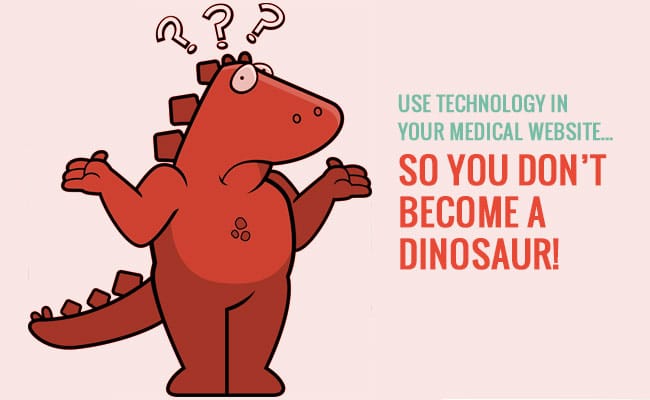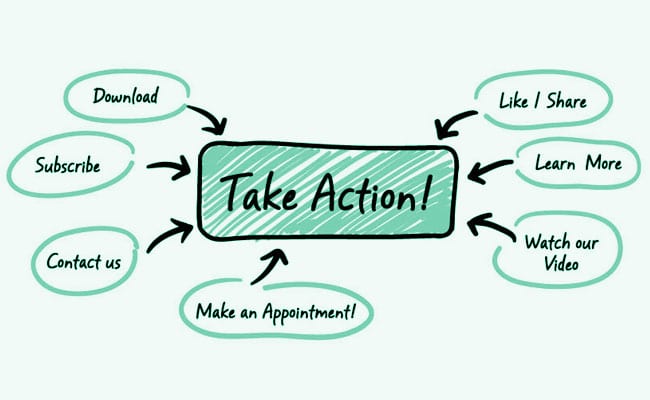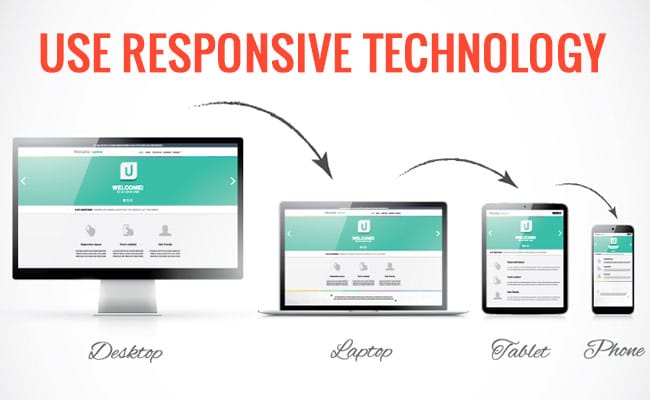The healthcare field, as a whole, is an incredibly progressive group. Physicians and hospitals, especially, are constantly improving on existing technologies that literally save lives every day. But a surprising number don’t know how to use the latest technology on their medical websites.
If your website looks and functions like the Flintstones, that translates to you being a dinosaur in your practice. Who wants a doctor who doesn’t keep up with the times?
As a doctor, you have to stay on top of the latest drug developments, HIPAA regulations or surgical techniques. You have a full roster of patients waiting to be seen, and Mr. Jones is holding on line 2 again.We get it. Web design is not your thing; you’d rather be doing what you do best. Web design is our thing, however, so we’ve put together a list of tips for you.
Here are a few ways to use technology in your medical website:
Use technology to streamline your appointment process.
Consumers do everything online, from booking hair appointments to hiring a plumber. They can order pizza online (which, if you operate a cardiology practice, may have contributed to them becoming your patient). So, why shouldn’t they be able to make an appointment with you? This is no longer optional – it’s an expectation.
The younger crowd may even make major healthcare decisions based on this functionality alone. Speaking with your receptionist is such a drag to them that they will just keep clicking until they find a physician who offers online appointment booking. Food for thought.
Use technology to offer useful information.
There are countless online magazines that boast of a massive and loyal following of readers. It’s safe to assume that if current and prospective patients are visiting your dot-com, they’re looking for one of two things: your office hours and contact information, or specific information related to the specialized care you provide.
Blogging and sharing content on social media is a way to use technology to meet that need.
Be intentional about the content of your website. The language you use on your website directly affects the visitor’s perception of your business. Stodgy, boring medical-speak language turns people off. Show some personality and speak in layman’s language. For goodness sake, hire a writer to tell your story.
If you operate a pediatric practice, don’t post information about hip replacements in senior citizens. Offer puree recipes for parents who wish to make their baby’s food at home, tips about vaccinations or news about the latest virus going viral.
What do you write about?
- Give answers to questions your patients ask all the time
- News about drugs or particular illnesses
- Case stories about a patient you treated
- Symptoms of certain illnesses
Remember, if your patients find it interesting or useful, you’re on the right track to earning trust. Tell stories. What doctor has the time and the skill to write? Get a writer to ghost do it for you and post it on social sites.
Use technology to nudge people to take action
It used to be acceptable to bombard your website visitors with popups, especially if you were running something like a business consultancy or ecommerce store. Those times are over. They’re the modern-day equivalent of a used car salesman screaming through the television.
Instead, use thoughtful calls to action and be intentional about where you place signup forms. This is where your design experts become invaluable to your business. They know how to present your website in such a way that is both helpful and compelling, which moves prospects to take action. That brings us to our next point.
Hire people who work with technology to get the job done.
Creative professionals exist for a reason. A professional designer, photographer, SEO expert and skillful writer can be the ultimate cure for your business. Turn your medical practice website into a lead-generation tool. Remind yourself that website copywriting is not a task for your receptionist to take care of during “slow” times.
It’s an investment that will pay you back immeasurable return. So, next time, skip the automatic online logo generator and become a powerful brand.
Use responsive technology to make your website work on any device.
When a website is able to adjust its layout and dimensions in order to accommodate a variety of devices, we call that “responsive design”.
We’re shocked when we run across medical websites that still lack this technology, because 60%+ of web users today are on mobile devices.
Don’t let yours be one of them. Join the Jetsons world by ensuring that when someone visits your site from a mobile phone or tablet, they’ll be able to enjoy the experience as much as (or more than) someone who is reading from a desktop computer.
Using technology in your medical practice website will keep you from becoming Dr. Dinosaur—or worse—looking like one. We know what happened to them.
Contact us at 1.212.979.8055 or via email to talk to us about what it takes to grow your practice and improve patient engagement through online marketing.







